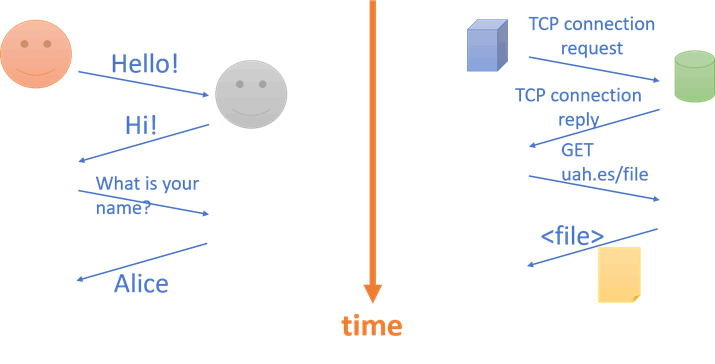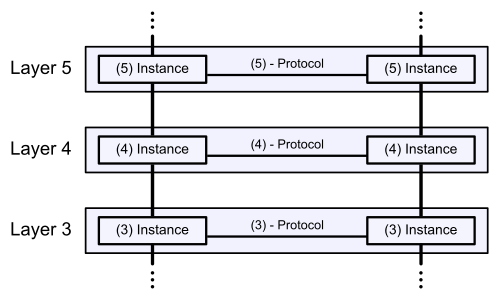Protocol layers and service models
The vertical view of the Internet considers a different problem of communication:
- How is an email is eventually translated into bits and sent to the network media?
- How can we guarantee that the email is received, even if the communication channel is noisy and prone to errors?
- Can a huge piece of information (for example, a streaming video) be sent in just a single packet or should it be fragmented to prevent the link from collapsing?
Basically, a communication protocol needs to be defined, analogously to the human language.

Figure 4 Human language in comparison to a network communication protocol
However, just a single protocol might be too complex to translate an email into bits. For this reason, the design is divided into protocol layers:
- Communication functions are divided into a number of modules or layers
- Network design is simplified:
- “Big problem” is fragmented in simpler problems
- → "divide and conquer”
- Layered design makes things easier
- The OSI model defines 7 layers
- The Internet (practical) model reduces it to 5 layers
- → The TCP/IP stack
- “Big problem” is fragmented in simpler problems

Figure 5 Protocol layers and services model diagram
Layered Communication in OSI-Model by Runtux (Own work) from Wikipedia Public Domain





